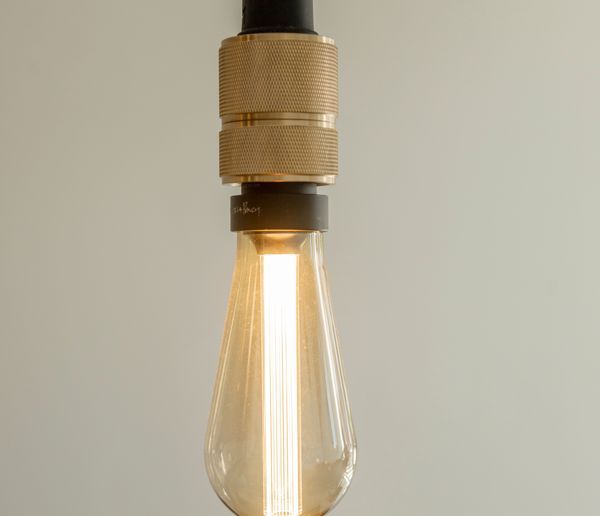
The Home-Owners' Association (VvE)
Everyone who buys an apartment will have to deal with the Home-Owners' Association (or VvE in Dutch). This is a formal group of owners in the same complex. Many people pay little attention to the VvE before buying a house. But do! A VvE is like a family, you can't ignore it and it can - potentially - cause a lot of trouble.
For example, a VvE can stipulate that an owner may not offer their home on websites such as Airbnb and that temporary rentals are not allowed. Some residents are happy with this because they value quiet living and do not want temporary vacationers in their neighborhood. For other residents, this is an unwanted restriction, because they also see their home as a source of income.
Watch out for extra VvE costs!
Before buying a house, understand the rules of the VvE, and whether they fit the way you want to live. Also be sure to research the financial situation. For example, if there is a lot of overdue maintenance, it could mean that you have to make additional unexpected payments. If major renovations are involved, such as a new roof, this can amount to many thousands of euros. An association with a well-stocked reserve fund runs less risk.
What is an VvE?
A VvE is an organization established by owners of apartments or houses in a common building or complex. The purpose of the VvE is to look after the common interests of the owners.
If you buy an apartment or house within a multi-owner building, you automatically become a member of the VvE. Actually, you are not buying an apartment, but an apartment right. That means you have the exclusive right to use your apartment – the private part of the building where you live. In addition, you are co-owner of the entire complex, and are therefore also – together with the other owners – responsible for the building. This joint responsibility for the proper management of the complex involves many legal rules.
Your obligations in a VvE
You cannot choose to be a member of the VvE, nor can you cancel your membership. As an apartment owner, you are automatically and legally required to be a member.
The most important task of the VvE
One of the most important tasks of the VvE is to ensure the maintenance of the overall building. The VvE manages all common property and spaces. It ensures that all owners and users (which are often tenants) abide by the rules set out in the subdivision deed, the subdivision regulations, and possibly the internal rules and regulations.
What does the board of a VvE do?
The VvE is managed by a board, which is elected from the members. The board is responsible for making decisions about the management and maintenance of the building, collecting monthly contributions from the owners - the VvE fee – preparing budgets, keeping records, and organizing annual meetings.
The VvE holds an annual general meeting of members, in which important decisions are made, such as approving the budget, electing the board, deciding on renovations, and establishing house rules.
Who may be on the board?
At the annual general meeting, members may nominate themselves for a position on the board. If there are more candidates than positions, members must vote. The candidate with the most votes is elected. The division rules state the number of directors needed to form a board. Usually this must be an odd number. If the board consists of more than one person, a chairman, secretary, and treasurer are also appointed. The VvE may decide to outsource some of the board duties to a professional VvE administrator.
Large VvE's
The vast majority of VvEs in the Netherlands have between two and ten owners. Only a small proportion – around 10% – have more than 100 owners. Such large VvEs are not uncommon in Amsterdam; they are often complexes that once belonged to a social housing association, which often still owns a substantial portion of the homes. As a result, the social housing organization has a lot of influence on the VvE’s policies.
The VvE contribution: the monthly cost
The VvE contribution is paid by the owners and is used to cover the costs of maintenance, insurance, management, and any reserve funds. The amount of the VvE contribution is usually determined based on the size and value of the apartment or house. This is different for each VvE, but can always be found in the regulations.
Based on the annual charges, the VvE board makes a proposal for the amount of the monthly contribution. Ultimately, the contribution is set at the annual members' meeting.
Since 2018, every VvE is required by law to set aside 0.5% of the rebuilding value of the property each year for maintenance. A better way is to have an MJOP drawn up.
Maintenance plans
A Multi-Year Maintenance Plan (MJOP in Dutch) provides insight into the expected maintenance and associated costs for a building or complex in the long term, usually over a period of 5 to 10 years. A Sustainable Multi-Year Maintenance Plan (DMJOP in Dutch) is a variant of the MJOP.
The purpose of an MJOP
The purpose of a MJOP is to enable the VvE to properly plan the maintenance of the building, reserve financial resources in an efficient manner, and avoid unexpected costs. The plan includes a detailed analysis of the building's maintenance condition, the work to be expected, and the estimated costs of this work.
Establish an MJOP
The preparation of an MJOP is usually done by a construction consulting firm or a specialised company. They inspect the building and identify its technical condition and any defects. Then they draw up a plan describing what maintenance work should be done at what time and the estimated costs.
Why is the MJOP important?
The MJOP serves as a guide for the VvE when making maintenance decisions and preparing the annual budget. Based on the plan, the VvE can determine the financial reserves needed and the amount of VvE contributions to pay for maintenance. It is important that a VvE has a current MJOP and have it updated regularly, as maintenance needs and costs can change over time. A well-maintained building preserves value and provides a pleasant living environment for the owners.
The statutes and internal regulations
Like any other association, a VvE has , which the members must follow. The bylaws consist of the - notarized - subdivision deed but they can be expanded to include additional regulations specific to each VvE.
What do the statutes say?
The statutes should include at least the name of the VvE, the purpose of the VvE, the required VvE contribution, and the method of convening the members' meeting. Many VvE’s use a Model Regulation (Modelreglement in Dutch), either unchanged or adapted to the actual situation of the building.
The subdivision deed
The subdivision deed was drawn up and recorded by a notary at the inception of the VvE. It is the legal foundation of the VvE. The deed is registered in the public registers of the land registry. Everyone can therefore see the contents of the subdivision deed. In the deed of subdivision, the share of each owner in the total costs is established according to a distribution key (called fractional parts). The VvE functions on the basis of this deed.

